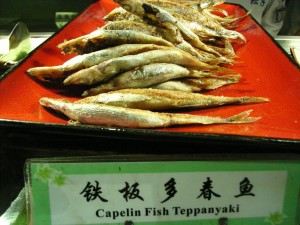November 25, 2011
Chinese Business has an Appetite for Capelin
 Promar Consultant Ayako Kuroki recently concluded field research in Dalian to assess trends in China’s capelin processing and consumption. The city is China’s third largest port, with thriving industries for fruits, vegetables, fisheries and seafood processing. Dalian has also become an export oriented seafood processing hub for Japan. This metropolis can be characterized by its vibrant downtown core lined with skyscrapers, shopping malls, and various scenic spots overlooking the ocean.
Promar Consultant Ayako Kuroki recently concluded field research in Dalian to assess trends in China’s capelin processing and consumption. The city is China’s third largest port, with thriving industries for fruits, vegetables, fisheries and seafood processing. Dalian has also become an export oriented seafood processing hub for Japan. This metropolis can be characterized by its vibrant downtown core lined with skyscrapers, shopping malls, and various scenic spots overlooking the ocean.
Fish is still mainly considered a luxury in China. Accordingly, capelin is primarily imported for the purpose of processing and re-export to Japan, as domestic consumption is generally limited to local Japanese restaurants. However, the expansion of the middle and upper classes has stimulated local demand for seafood products, such as capelin. Starting this year, major foreign food retailers are planning to respond to this demand by offering a wider selection of relatively inexpensive seafood products.
China’s elite are ready for capelin, but the average consumer is still unfamiliar with the idea of eating this fish. Another factor hindering capelin’s popularity is that, unlike Japanese households, the average Chinese home is not equipped with a basic grill. Consequently, local industry players have discussed promoting frying capelin as a possible method to increase home consumption.
Picture:
Komochi shishamo (literally meaning child-bearing capelin) is a popular dish in Japanese restaurants in China.
